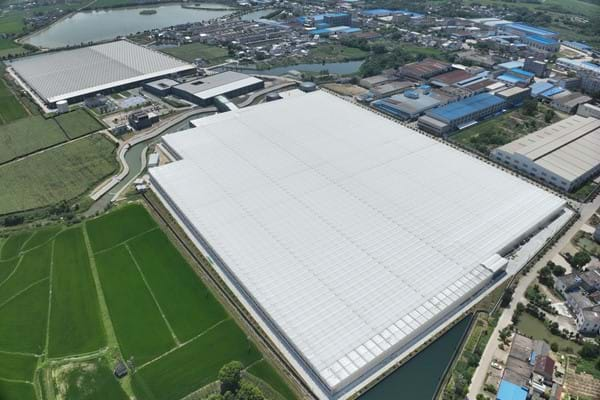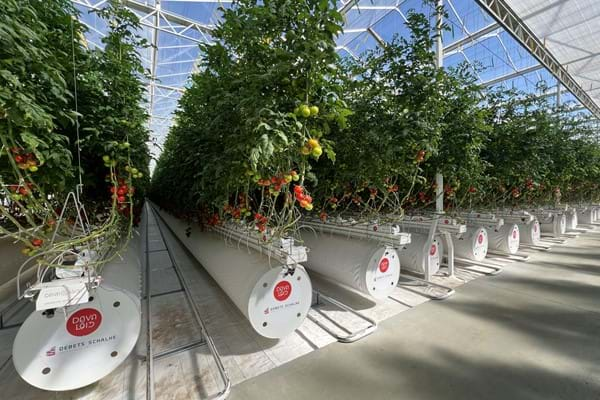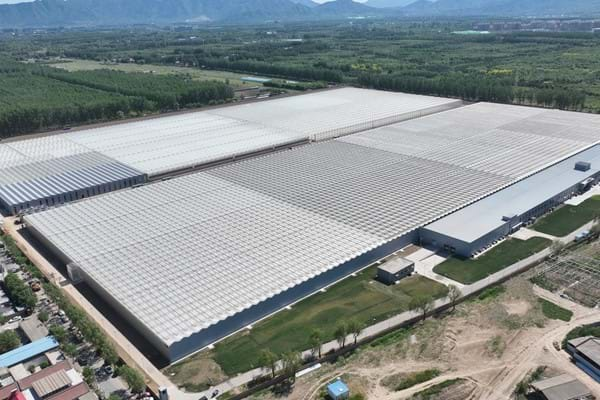The 4Seasons greenhouse by Debets Schalke is a semi-closed greenhouse solution that guarantees optimal growing conditions year-round, regardless of external weather influences. In this type of greenhouse, air is supplied from a climate chamber into the growing area using fans and air distribution hoses. Located along the external wall of the greenhouse, this climate chamber enables ventilation with indoor air, outdoor air, or a combination of both.
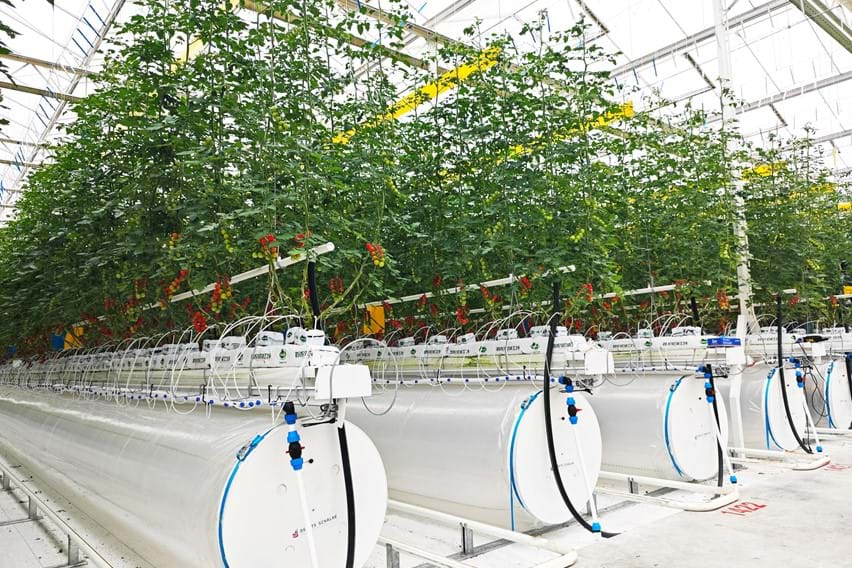
Optimizing greenhouse production in a hot and dry climate
During adiabatic ‘pad wall’ cooling, outside air is drawn into the climate chamber through a wall of wetted cooling pads. The cooled outside air is then distributed through the air hoses. The precisely engineered hole pattern in the hoses ensures uniform airflow throughout the greenhouse. This energy-efficient cooling method makes the semi-closed greenhouse particularly well-suited for crop cultivation in hot and dry climates.
Optimizing greenhouse production in (sub)tropical climate
Mechanical cooling provides an effective solution for regions with high temperatures and humidity levels. This system uses heat exchangers installed in front of the fans to gradually cool the greenhouse by recirculating dry, cold air until the desired temperature is reached. This method of cooling and dehumidification enables the cultivation of high-quality produce in (sub)tropical climates.
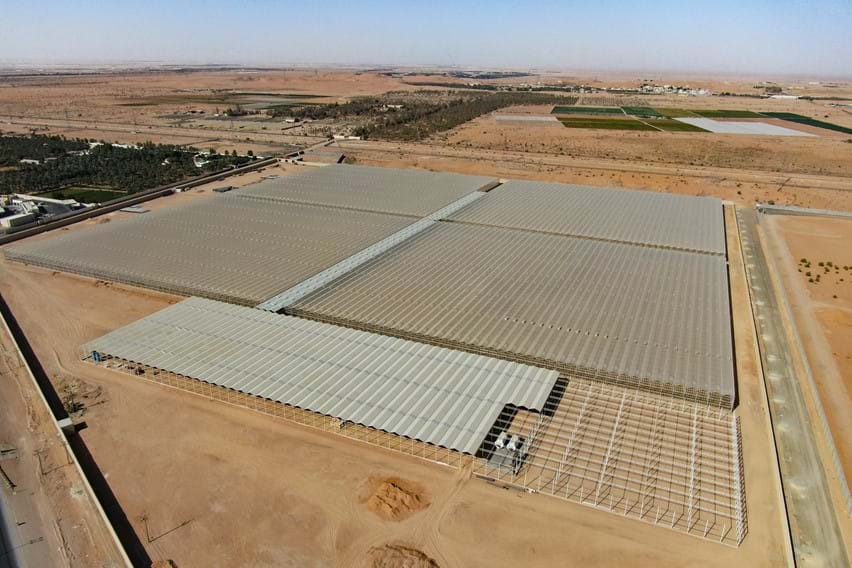
Sustainable cultivation in a semi-closed greenhouse
The semi-closed greenhouse offers two ventilation methods: air can be expelled through the roof and recirculated from the greenhouse into the climate chamber and back. This advanced airflow system not only improves the microclimate around the plants but also increases CO₂ availability. The result is an environmentally friendly cultivation process that supports sustainable, high quality crop production.
Maximum food safety
The technical design of the semi-closed greenhouse enhances food safety. Its unique airflow facilitates effective dehumidification, which prevents mould formation. In addition, the greenhouse operates under slight overpressure. Combined with insect netting, this effectively prevents the entry of unwanted insects and reduces the risk of crop diseases.
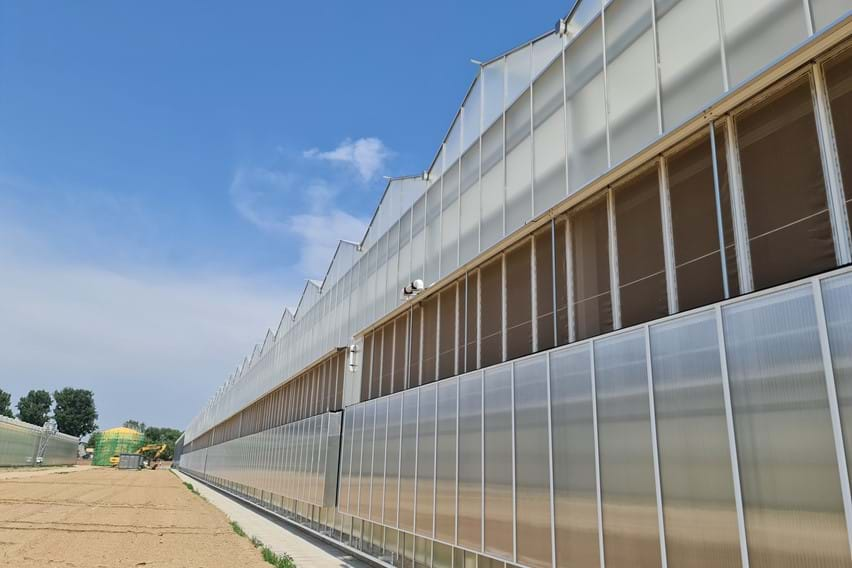
Optimal results
The semi-closed greenhouse guarantees year-round crop security through its ideal microclimate, increased sunlight exposure, reduced need for pesticides and fungicides, lower CO₂ emissions, decreased water consumption, efficient heat retention, and minimal reliance on fossil fuels. These combined advantages result in lower operational costs and higher returns.
